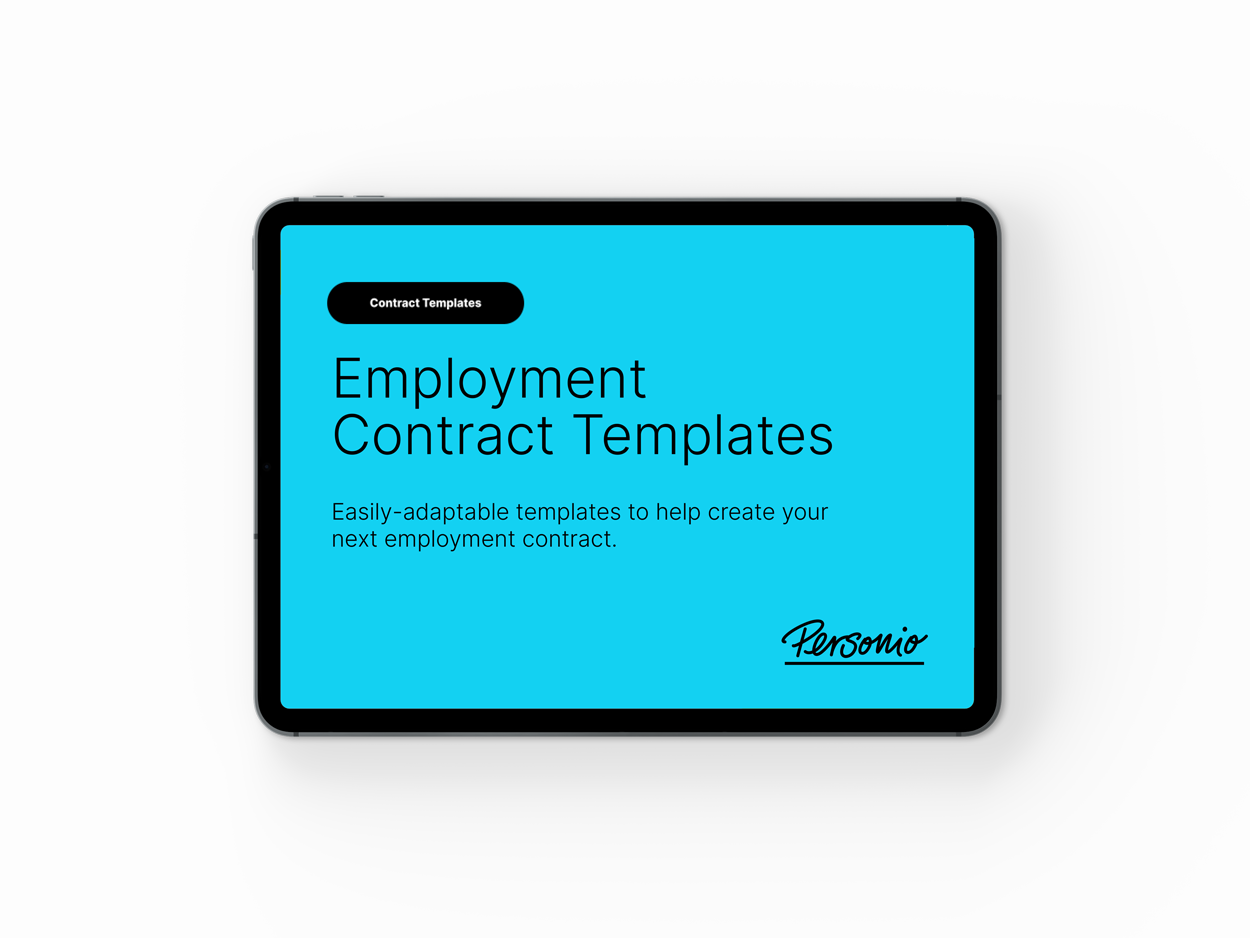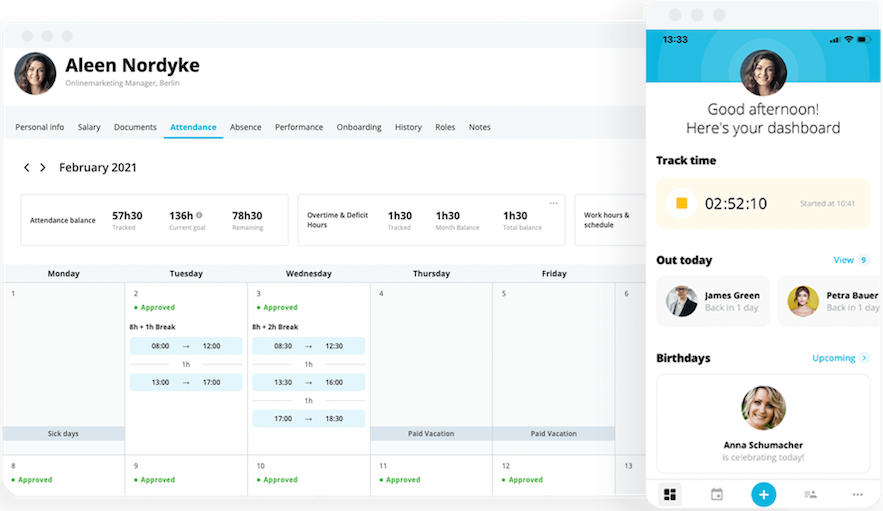How to Write a Recommendation Letter: Template & Example
If you manage employees, you’ll probably be asked to write a letter of recommendation from time to time. This is a great way to support your employees' past and present as they move forward in their careers… but if you’ve never written one before, it can be difficult to know where to start.
In this article, we’ll share our step-by-step guide to writing a recommendation letter for an employee or former employee, and provide a template and example to help you get started.
Key facts:
A letter of recommendation is an important part of the hiring process that adds credibility to a candidate’s application.
If you’re frequently asked to write letters of recommendation for employees, you should consider creating (or downloading) a template to help you.
Reviewing information in the employee’s file can help refresh your memory if they haven’t worked for you for a while.
You can also ask the employee to provide a copy of their current CV and the job description for the role they’re applying for.
What Is a Letter of Recommendation?
A letter of recommendation is a letter written by a former or current employer to a potential employer to recommend a person for a particular role. The employee who has applied for the job might provide the letter along with their application, or the hiring company might request it after making a provisional offer. These letters are an important part of the hiring process because they allow potential employers to verify details about the people they’re thinking of hiring.
How to Write a Letter of Recommendation for an Employee
If you’ve been asked to write a letter of recommendation, you can follow the steps below.
1. Gather the Information You Need
Before you start writing your letter, it’s a good idea to refresh your memory about the employee you’re writing about — especially if it’s been a while since you worked together. You can start by looking through their employee file and reviewing correspondence and any documentation of things like promotions or performance reviews.
It can also be useful to ask the employee for a copy of their most recent CV, which can help you to understand how their skills have developed since they left your organisation. You should also ask them for a copy of the job description for the position they’re applying for. This helps you to make sure your letter is tailored to the role.
2. Use the Correct Format
A letter of recommendation is a professional document, which means that there’s a specific format you should follow. It can be useful to begin with a template or framework to help you get it right. This is particularly useful if you’re frequently asked to write letters of recommendation, because it can end up taking up a lot of your time if you have to start from scratch each time. We’ll provide a simple template you can use below.
As a general rule, your letter of recommendation should include:
A formal salutation: This is usually ‘Dear [Title] [Last Name]’ (for example, Dear Mr Smith). If you don’t know the person’s name, you could use ‘To whom it may concern’.
An introduction: This should be a sentence or two explaining how you know the employee. It should state the dates they worked at your organisation, and whether or not they reported directly to you.
The body text: This should briefly describe the employee's skills and achievements. You should give as much specific detail as you can, but try not to go over 2–3 paragraphs.
A formal sign-off: For example, ‘Yours sincerely’ or ‘Yours faithfully’.
You may want to format your recommendation as a printed letter. If you do, you should include your name and address and the name and address of the recipient at the top of the page. However, these days, recommendations are often sent by email, which means you may not need these formalities.
3. Highlight the Employee’s Key Skills and Accomplishments
Next, you should list the employee’s most significant skills. You can’t mention everything, so pick out those that are most relevant to the role they’ve applied for. You should also mention any key accomplishments that your employee achieved while working for you. For example, if they were promoted or received consistently high praise in their performance reviews, this would be a good thing to mention.
4. Strengthen Your Letter With Specific Examples
Including specific examples or anecdotes that back up your recommendation can strengthen your letter. An example would be mentioning a specific goal or target that the employee reached. The more specific you can be here, the better — so if you have access to actual statistics or metrics, it’s worth including them.
5. Conclude and Sign Off the Letter
It’s common to conclude your letter by confirming that you would recommend the person in question for the role. You could also offer to provide the recipient with more information if it’s needed. Then, add a polite sign-off, as well as your name and signature (if it’s a printed letter).
6. Proofread and Review Your Letter
Before sending your letter, be sure to carefully proofread it to eliminate any mistakes and make sure you’ve got all of the relevant details correct. You should pay particular attention to the details about your former employee, such as the dates they worked for you.
Letter of Recommendation: Template
Here’s a template you can use to write a basic letter of recommendation for an employee:
[Your name] |
[Your company name] |
[Your company name] |
[Date] |
[Recipient's name]
[Recipient’s company name]
[Recipient’s company address]
Dear [Recipient]/To whom it may concern,
I am writing to recommend [employee name] for the position of [role] at [hiring company]. [Employee first name] worked for me at [company] between [start date] and [end date]. During this time, [he/she] reported directly to me.
[Employee] is [quality], [quality] and [quality], and [his/her] strong skills in [skill] and [skill] are impressive. [Add more details about skills and attributes]
Specifically, [employee] used her skills in [skill] to [achieve achievement]. [Add more details about specific achievements if needed]
In summary, I would not hesitate to recommend [employee] for the role of [role]. Please feel free to contact me if you would like to discuss [employee]’s qualities further.
Yours sincerely,
[Your signature]
[Your name]
Letter of Recommendation: Example
Here is an example of a letter written using the template above:
Ms Jane Doe |
ABC Kitchen Supplies |
123 Roe Street, London |
21st December 2023 |
Mr Joe Jones
ZBZ Cutlery Inc
14 Example Street, Dublin
Dear Mr Jones,
I am writing to recommend Sally Sparrow for the position of marketing manager at ZBZ Cutlery Inc. Sally worked for me at ABC Kitchen Supplies between 1st June 2018 and 23rd July 2021. During this time, she reported directly to me.
Sally is diligent, hardworking and proactive, and her strong skills in copywriting, editing and content management are impressive. During her time with our organisation, Sally was promoted from marketing assistant to assistant manager within just one year. She consistently received high scores in her annual performance reviews.
Sally also used her skills in social media management to grow our following by 200% in just three months, and by 500% over 18 months.
In summary, I would not hesitate to recommend Sally for the role of marketing manager. Please feel free to contact me if you would like to discuss Sally’s qualities further.
Yours sincerely,
J Doe
Ms Jane Doe
Frequently Asked Questions About Letters of Recommendation
Here are the answers to some FAQs about letters of recommendation:
What Is Included In a Letter of Recommendation?
Recommendation letters typically include:
A formal salutation and sign-off
Information about the employee’s time working for you
Details about the employee’s skills, qualities and achievements
An offer to provide more information if needed
What Is a Salary Increase Recommendation Letter?
A salary increase recommendation letter is a different type of letter. They are written by an employee’s manager to the company’s upper management to recommend that an employee be given a raise.
Never Lose Track of Employee Details
If you’re asked to write a letter of recommendation for an employee that hasn’t worked for you in several years, it can be difficult to remember specific details about them. That’s why you need to safely store all employee data and documentation in one central, easily accessible location that you’ll be able to access even years down the road.
Tools like Personio let you create a Digital Employee File for each employee so that you can always find the information you need. Your employees’ data is totally secure, and you have full control over who can view, request or make changes to information.
Then, when you have to write a letter of recommendation for an employee from the distant past, you can simply open up their file and use their performance reviews, promotion documents, correspondence and more to refresh your memory.
Sign up for a free trial to give Personio a try.

